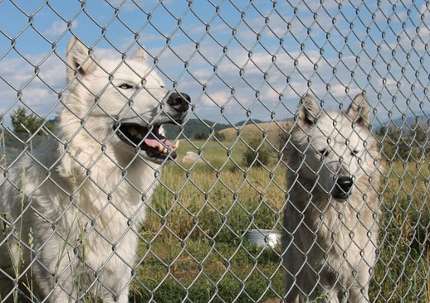Border fences need not harm large fauna

Although the increasing number of fences and walls along national boundaries is intended to prevent human migration, these can also have disastrous consequences for the natural spread of large animals. These constructions could rapidly destroy decades of international collaboration to facilitate the spread of European brown bears, lynxes and wolves, for example. This is the argument that lawyer Arie Trouwborst presents in the article entitled 'RECIEL: Review of European, Comparative & International Environmental Law'. The author and his research group are working at Tilburg University with the support of a Vidi grant from the NWO Talent Scheme.
Fences, walls and other obstacles along national borders are rapidly springing up worldwide. These partitions not only influence human movements, but could also unintentionally have important consequences for wild animals. Examples of this are the limiting of migration, the splitting up of populations and direct mortality as a consequence of animals becoming trapped in netting or barbed wire. Large carnivores and herbivores are particularly susceptible. Trouwborst: 'As if the human tragedy that occurs around such fences were not enough, this extra collateral damage in the animal world is piled up on top of that.'
The presence of fences between the United States and Mexico and between North and South Korea is public knowledge, but there are now also thousands of kilometres of fences along other borders, such as those between Malaysia and Thailand, India and Pakistan, Iran and Iraq, China and Mongolia, Botswana and Zimbabwe, et cetera. The hastily constructed obstacles along the internal and external borders of the EU intended to stem the flow of refugees can also be added to this list. A recent estimate calculated the total length of fences in Europe and Asia alone (excluding the Middle East) to be about 30,000 kilometres.
In breach of international treaties
Trouwborst and his colleagues examined the effects of border fences on wildlife from the perspective of law and policy with an emphasis on the international law concerning fauna. They analysed relevant decrees from a wide range of international and regional legal instruments, with additional focus on the Bonn Treaty concerning migrating animal species and the European Union's Habitat Directive. Trouwborst: 'The ill-considered construction of border fences could, depending on the circumstances, be in breach of a range of international treaties ranging from the African Nature Conservation Convention to the World Heritage Convention.'
The researchers have reached the conclusion that there is enough space for an improved contribution of these legal instruments to prevent and alleviate the harmful effects of border fences. Trouwborst: 'The decision-making around border fences is often politically charged and unfortunately we cannot expect that the consequences for bears or antelopes will determine whether or not a fence is built. It is reasonable, however, to expect that the effects on wildlife will at least be considered. Furthermore, a lot of misery at border fences could be prevented with relatively simple technical interventions. International nature conservation treaties form suitable fora for making the governments involved more aware of the problem as well as the solutions.'
More information: Arie Trouwborst et al. Border Fences and their Impacts on Large Carnivores, Large Herbivores and Biodiversity: An International Wildlife Law Perspective, Review of European, Comparative & International Environmental Law (2016). DOI: 10.1111/reel.12169




















